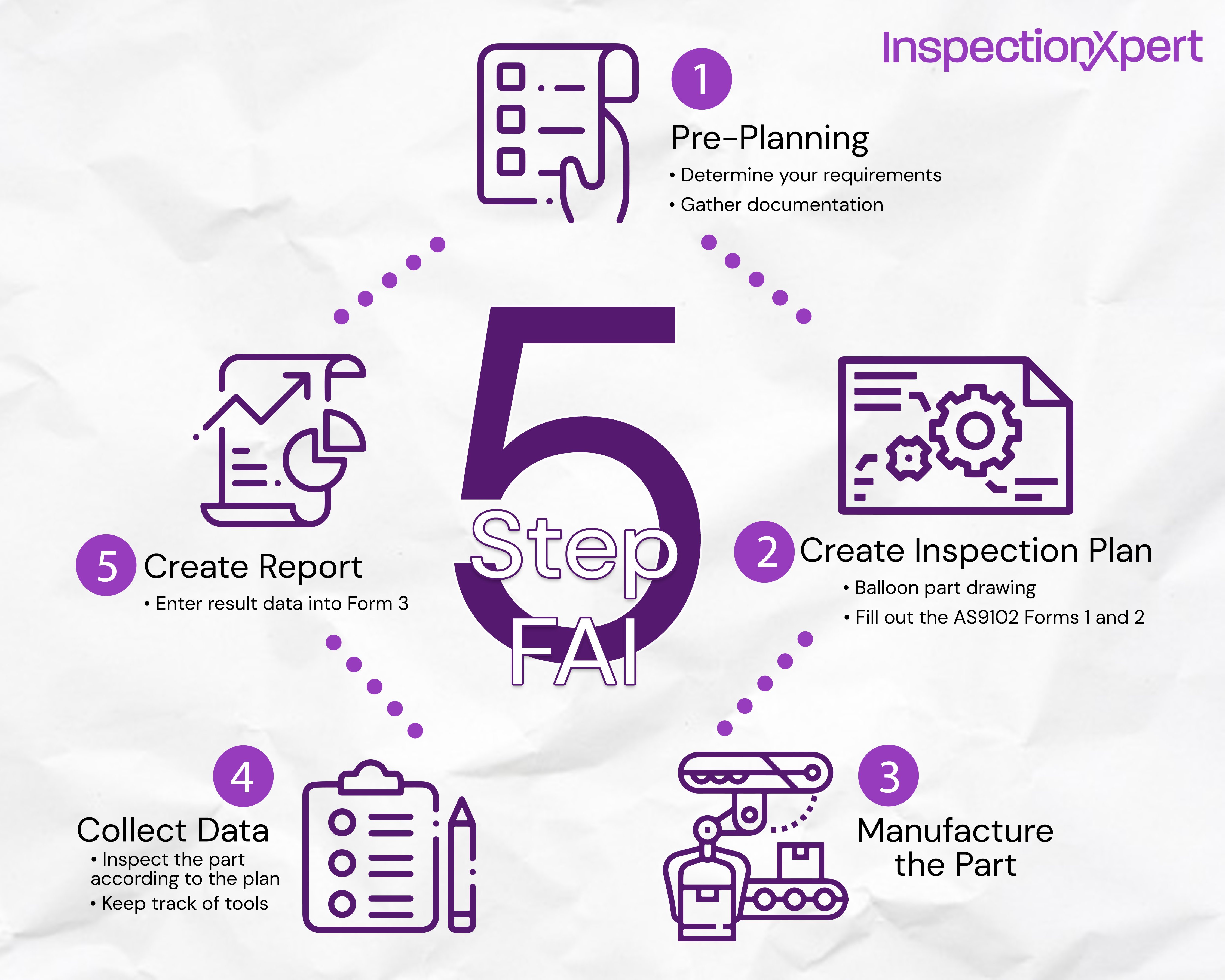
First Article Inspection (FAI) is the process of planning, manufacturing, and verifying a production process. A First Article Inspection Report (FAIR) is the document that certifies that each sample was produced and inspected according to the customer's specifications.
In the aerospace and defense industries in the US, most companies conduct AS9102 First Article Inspections. AS9102 is a standard updated by the SAE to emphasize the value of the FAI process, and is a common reporting format for aerospace and defense manufacturers. AS9102 isn't a formal requirement – it is a guidance document that doesn't require certification.
Here's how you can create a First Article Inspection Report in five steps.
Before beginning, gather the documentation needed for your First Article Inspection:
There are three forms in an AS9102 FAIR:
Balloon your part drawing: identify the requirement to be inspected with a balloon number. Prepare your AS9102 forms for the inspection.
Build the product and ensure you are documenting processing and inspection results for the requirements during the manufacturing process.
Inspect the part according to the inspection plan created in Step 2.
Enter your measurement result data into AS9102 Form 3.

As parts continue to get more complex, quality departments are evolving their processes to keep up. Many quality professionals use software such as InspectionXpert to simplify the process of preparing for and creating their First Article Inspection Reports. By using software that extracts feature information and automatically applies tolerances while you balloon, you can reduce time spent typing and improve accuracy.
Jason van de Laar, the Quality Engineer at JTL Integrated Machine, overhauled their manual ballooning and reporting process for FAIRs. JTL specializes in large, complex parts for the power generation, mining, oil and gas, and metal industries. Their smallest parts are 6,000 lbs. and part drawings can be 29 pages long with 1,000 balloons. Characteristics have multiple instances, so Jason’s first articles frequently have 5,000+ lines of characteristic data.
Jason now balloons part drawings in InspectionXpert, which automatically applies tolerances according to each customer’s requirements. He exports to InspectionXpert’s default AS9102 report template, and inspectors take a laptop with them as they inspect the part, entering results directly into the Excel report. Jason says, “Now we can get the reports done quickly and focus on what really matters to our customers: ensuring quality parts go out the door.”
Copyright 2025 InspectionXpert Corporation, is a wholly owned subsidiary of Ideagen Inc, All Rights Reserved